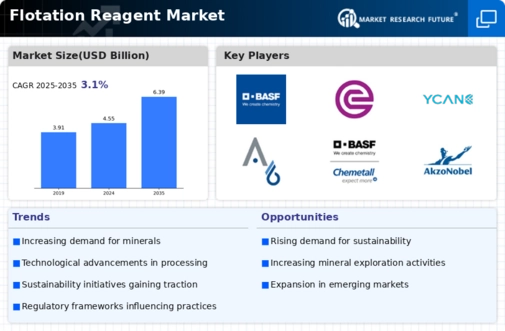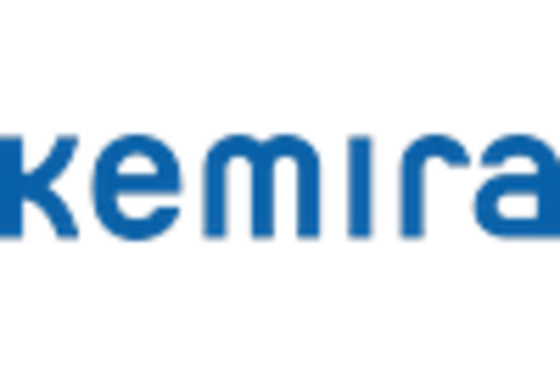Rising Investment in Mining Activities
The Flotation Reagent Market is benefiting from rising investments in mining activities across various regions. Increased funding for exploration and production projects is driving the demand for flotation reagents, as these chemicals are crucial for the efficient extraction of minerals. Governments and private investors are recognizing the potential of mineral resources, leading to a resurgence in mining operations. This trend is particularly evident in regions rich in untapped mineral deposits, where new projects are being initiated. As investment flows into the mining sector, the demand for flotation reagents is expected to grow correspondingly, indicating a positive outlook for the market in the coming years.
Increasing Demand for Mineral Resources
The Flotation Reagent Market is experiencing a surge in demand for mineral resources, driven by the growing need for metals and minerals in various sectors, including construction, electronics, and renewable energy. As economies continue to develop, the extraction of valuable minerals such as copper, gold, and lithium becomes increasingly critical. This trend is likely to propel the flotation reagent market, as these chemicals are essential for the efficient separation of minerals from ores. According to recent data, the demand for flotation reagents is projected to grow at a compound annual growth rate of approximately 5% over the next few years, reflecting the industry's response to the escalating need for resource extraction. Consequently, the flotation reagent market is poised for substantial growth as mining operations expand to meet global resource demands.
Growing Focus on Sustainable Mining Practices
The Flotation Reagent Market is witnessing a growing focus on sustainable mining practices, which is reshaping the demand for flotation reagents. As stakeholders increasingly prioritize environmental responsibility, mining companies are adopting practices that minimize their ecological footprint. This includes the use of flotation reagents that are less harmful to the environment and more efficient in mineral recovery. The trend towards sustainability is not only driven by regulatory pressures but also by consumer preferences for responsibly sourced materials. Consequently, the market for eco-friendly flotation reagents is likely to expand, as companies seek to align their operations with sustainable practices. This shift presents both challenges and opportunities for the flotation reagent market, as it adapts to meet the evolving demands of the industry.
Regulatory Compliance and Environmental Concerns
The Flotation Reagent Market is increasingly influenced by regulatory compliance and environmental concerns. Stricter regulations regarding the use of chemicals in mining operations are prompting companies to seek more environmentally friendly flotation reagents. This shift is driven by the need to minimize the ecological impact of mining activities and adhere to government regulations aimed at protecting natural resources. As a result, there is a growing market for biodegradable and non-toxic flotation reagents. The demand for such products is expected to rise, as companies strive to meet regulatory standards while maintaining operational efficiency. This trend not only reflects a commitment to sustainability but also presents opportunities for innovation within the flotation reagent market.
Technological Innovations in Flotation Processes
Technological advancements in flotation processes are significantly influencing the Flotation Reagent Market. Innovations such as the development of more efficient reagents and the integration of automation in flotation systems are enhancing the overall efficiency of mineral processing. These advancements not only improve recovery rates but also reduce operational costs for mining companies. For instance, the introduction of novel collectors and frothers has been shown to increase the selectivity and recovery of valuable minerals. As mining operations seek to optimize their processes, the demand for advanced flotation reagents is expected to rise. This trend indicates a shift towards more sustainable and efficient mining practices, which could further stimulate growth in the flotation reagent market.


















Leave a Comment